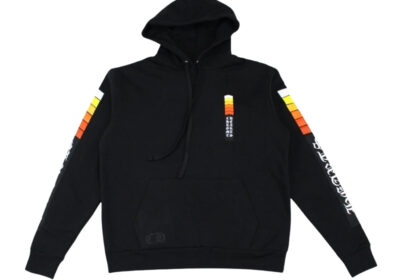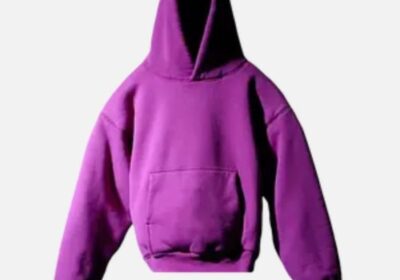Fashion is a multidimensional phenomenon that transcends mere aesthetics, functioning as both shield and declaration of identity. It offers a visual vocabulary for communicating personality, aspirations, and moods in ways words cannot fully capture. Mixed Emotions Clothing, in particular, amplifies this capacity, allowing individuals to navigate complex emotional landscapes through style. These garments articulate tension, ambivalence, and nuance simultaneously, reflecting the inherent contradictions of human experience. By integrating texture, silhouette, and color in unconventional ways, wearers can transform a wardrobe into a living narrative, bridging internal mixedemotionn.com states with external perceptions in a compelling, evocative manner.
Defining Mixed Emotions Clothing
Conceptual Underpinnings
Mixed Emotions Clothing operates as a sartorial philosophy that embraces ambiguity, paradox, and juxtaposition. Unlike conventional fashion categories, which often adhere to rigid stylistic definitions, this approach celebrates contradiction and multiplicity. A garment can exude refinement while hinting at rebellion, or casualness while conveying sophistication. It is not merely an aesthetic but a cognitive framework that allows wearers to externalize complex emotional states. This philosophy mirrors the psychological reality of modern life, acknowledging that humans rarely exist in purely singular emotional modes. Mixed Emotions Clothing thus functions as both personal armor and expressive canvas, merging functionality with introspective artistry.
Emotional Versatility in Wardrobe Choices
At the heart of Mixed Emotions Clothing is the capacity to mirror internal emotional flux. Garments are crafted to adapt to differing moods, contexts, and social interactions, offering emotional versatility without sacrificing aesthetic coherence. A single ensemble might evoke serenity in one environment yet suggest audacity in another, depending on how the wearer accessorizes or layers the pieces. This adaptability fosters emotional intelligence and self-reflective dressing, turning routine wardrobe decisions into opportunities for self-exploration. In this paradigm, clothing becomes a dynamic instrument for communicating subtle emotional gradients, enabling wearers to inhabit multiple facets of identity with confidence and intentionality.
Clothing as an Identity Marker
The Semiotics of Style
Every article of clothing functions as a semiotic artifact, signaling information about the wearer’s personality, values, and cultural affiliations. Mixed Emotions Clothing intensifies this semiotic density by deliberately incorporating contradictory elements. A garment may simultaneously suggest nostalgia and futurism, minimalism and extravagance, or restraint and flamboyance. Observers decode these signals, often subconsciously, forming complex impressions based on layered cues. This multidimensional semiotic quality allows fashion to serve as a medium for narrative construction, with each ensemble representing a deliberate statement of identity. Through this lens, style operates not merely as decoration but as a sophisticated, visual lexicon of selfhood.
Personal Narrative Through Apparel
Clothing has historically been used as a storytelling medium, conveying biographical, philosophical, and aspirational elements of identity. Mixed Emotions Clothing expands this narrative capacity by embracing ambivalence and contradiction, reflecting the multifaceted nature of human experience. Individuals can integrate garments that embody past experiences, emotional subtleties, or aspirational states into a single cohesive aesthetic. This approach transforms dressing into a performative act of self-expression, where each outfit becomes a chapter in a larger personal narrative. By curating clothing in this intentional, introspective manner, wearers articulate their internal complexity to the external world, fostering authenticity and depth in self-presentation.
The Psychology of Mixed Emotions in Fashion
Emotional Cognition and Color Theory
Color profoundly influences perception and mood, forming a cornerstone of emotional cognition in fashion. Designers of Mixed Emotions Clothing exploit these principles to create garments capable of eliciting multilayered emotional responses. For example, deep blues may simultaneously induce calmness and introspection, while muted reds evoke warmth and subtle tension. Layering complementary and contrasting hues further amplifies emotional resonance, creating visual ambivalence that mirrors internal states. This deliberate manipulation of color and texture allows clothing to act as an emotional conduit, enhancing self-awareness and interpersonal communication through sartorial subtleties that resonate with both wearer and observer.
Mood-Inspired Styling
Wardrobe choices are intimately tied to psychological states, with clothing influencing and reflecting emotions. Mixed Emotions Clothing encourages adaptive styling practices, allowing ensembles to evolve in response to fluctuating moods. A single outfit can be reinterpreted through accessory choices, layering, or juxtaposition, enabling wearers to modulate their external presentation daily. This intentional engagement fosters greater self-reflection and emotional literacy, transforming dressing into an active process of self-interpretation. By embracing garments that accommodate complexity, individuals cultivate an awareness of how mood, aesthetics, and identity intersect, rendering fashion both a tool for personal insight and a means of nuanced social communication.
Cultural Influences on Style Identity
Global Trends and Hybrid Fashion
Global interconnectedness has blurred the boundaries of cultural expression, influencing the evolution of contemporary style. Mixed Emotions Clothing thrives in this hybridized landscape, merging traditional motifs with avant-garde experimentation. Garments may incorporate indigenous patterns, futuristic silhouettes, and subcultural references within a single ensemble, reflecting pluralistic and cosmopolitan identities. This synthesis challenges rigid stylistic categorizations and fosters aesthetic pluralism, enabling individuals to honor heritage while embracing innovation. By integrating cross-cultural design elements, Mixed Emotions Clothing becomes a platform for dialogue between the local and the global, embedding cultural literacy and creativity within the language of fashion itself.
Subcultures and Individual Expression
Fashion has long served as a vehicle for subcultural identity, delineating social boundaries and signaling affiliation. Mixed Emotions Clothing transcends these limitations by accommodating multiplicity and ambiguity within a single aesthetic framework. Individuals can integrate stylistic cues from diverse subcultures while maintaining a coherent personal identity, enabling nuanced self-expression that resists rigid categorization. This fluidity democratizes fashion, empowering wearers to negotiate complex social landscapes without sacrificing authenticity. By embracing this hybridized approach, style becomes a flexible instrument for exploring intersectional identities, providing a visual articulation of belonging that is simultaneously individualistic and socially informed.
Styling with Mixed Emotions Clothing
Layering Techniques and Contrasts
Layering is a central strategy for expressing emotional complexity in fashion. By combining garments of varying textures, patterns, and structures, wearers can convey tension, harmony, or contradiction. Thoughtful layering allows an outfit to evolve in visual and emotional perception, depending on context or observer interpretation. Designers often employ asymmetry, tonal shifts, and unexpected combinations to heighten this effect, creating ensembles that reward close inspection. This approach transforms dressing from a utilitarian act into an aesthetic practice, encouraging experimentation, mindfulness, and creative problem-solving, where each element contributes to a multidimensional emotional expression.
Accessories as Emotional Amplifiers
Accessories function as critical modulators of mood and emphasis in Mixed Emotions Clothing. A scarf, hat, brooch, or footwear can pivot the perception of an ensemble from playful to solemn, restrained to flamboyant, or contemporary to nostalgic. These accent pieces allow wearers to fine-tune emotional signaling, creating a dynamic interplay between core garments and visual highlights. Designers often exploit contrast and unexpected textures in accessories to evoke layered affective responses. In this manner, the minutiae of styling—often overlooked in conventional fashion—becomes an essential component of emotional expression, enabling garments to communicate subtle narrative cues effectively.
Consumer Behavior and the Appeal of Emotional Complexity
Modern Consumer Psychology
Modern consumers increasingly prioritize authenticity, introspection, and nuanced self-expression in fashion. Mixed Emotions Clothing aligns with these values by offering garments that accommodate complexity, ambiguity, and adaptability. Consumers are drawn to clothing that reflects evolving identities and emotional landscapes, as it resonates with the psychological desire for meaningful self-representation. This approach contrasts sharply with trend-driven fast fashion, providing depth and flexibility that enhances personal narrative construction. Emotional engagement with clothing fosters a sense of ownership and agency, making Mixed Emotions Clothing not only an aesthetic choice but also a psychologically satisfying medium for expressing multifaceted aspects of identity in an authentic, resonant way.
The Desire for Multifaceted Self-Presentation
In contemporary social environments, individuals seek to present themselves with sophistication, depth, and adaptability. Mixed Emotions Clothing fulfills this desire by enabling simultaneous communication of multiple emotional and stylistic narratives within a single outfit. This capacity for layered self-presentation resonates with digital-era social dynamics, where identity is performed and perceived across multiple contexts. Consumers are increasingly drawn to versatile garments that support this performativity, as they provide both visual intrigue and emotional resonance. By facilitating expressive flexibility, Mixed Emotions Clothing allows wearers to navigate complex interpersonal landscapes, communicate subtleties of character, and cultivate an aesthetically coherent yet psychologically rich public persona.
The Evolution of Emotional Wardrobe
Adaptive and Interactive Fashion
Emerging technologies are poised to redefine the interface between clothing and emotion. Smart fabrics, responsive textiles, and interactive garments can adjust color, texture, or pattern in response to wearer mood or environmental stimuli. Mixed Emotions Clothing may evolve into a semi-autonomous medium, reflecting real-time psychological states and providing dynamic emotional feedback. This integration of technology and design could make clothing a more intimate, expressive instrument than ever before, bridging the gap between internal experience and external presentation. As emotional responsiveness becomes increasingly embedded in fashion, style will transcend static aesthetics to become an interactive, living extension of identity.
Sustainability Meets Emotional Resonance
Sustainability is increasingly a defining principle of contemporary fashion, and Mixed Emotions Clothing aligns with this paradigm through modular, versatile, and enduring design. By prioritizing adaptable garments, designers reduce waste while accommodating the dynamic emotional and aesthetic needs of wearers. Timeless designs, hybrid materials, and multifunctional pieces allow clothing to evolve alongside the individual, providing long-term utility and resonance. This fusion of ecological mindfulness with emotional sophistication reinforces the conceptual depth of style, positioning clothing as both a medium of personal expression and an agent of ethical responsibility, marrying aesthetic innovation with conscientious environmental stewardship.
Style as an Ever-Evolving Reflection of Identity
Mixed Emotions Clothing embodies the fusion of aesthetic innovation and psychological sophistication, offering wearers a medium to express complexity, ambiguity, and nuance. It validates the coexistence of contradictions within identity while providing tools for deliberate narrative construction. By embracing versatility, emotional resonance, and adaptive styling, individuals transform clothing into a dynamic reflection of evolving selfhood. As fashion continues to intersect with technology, sustainability, and global culture, Mixed Emotions Clothing exemplifies how style can transcend superficiality, becoming a deliberate, thoughtful, and profoundly expressive articulation of the human experience.







Leave feedback about this